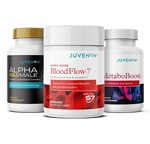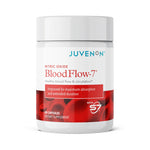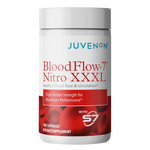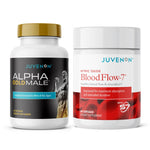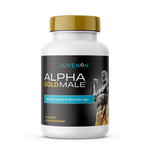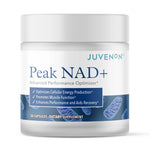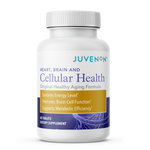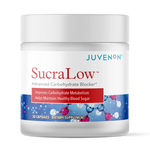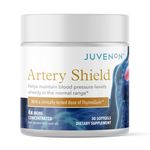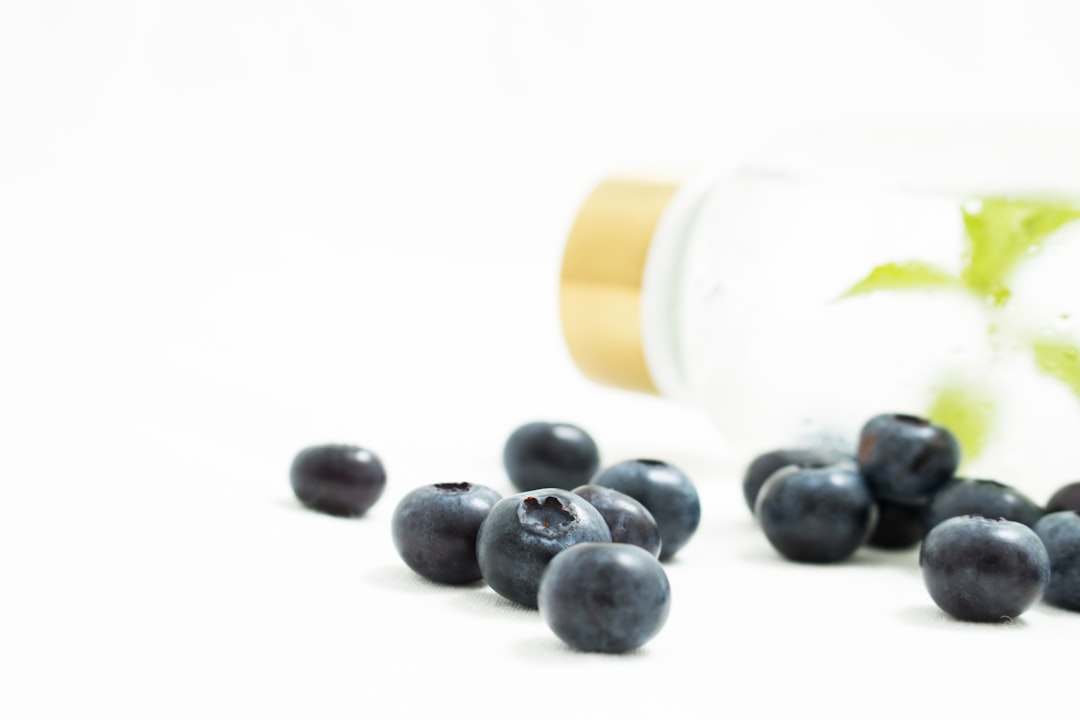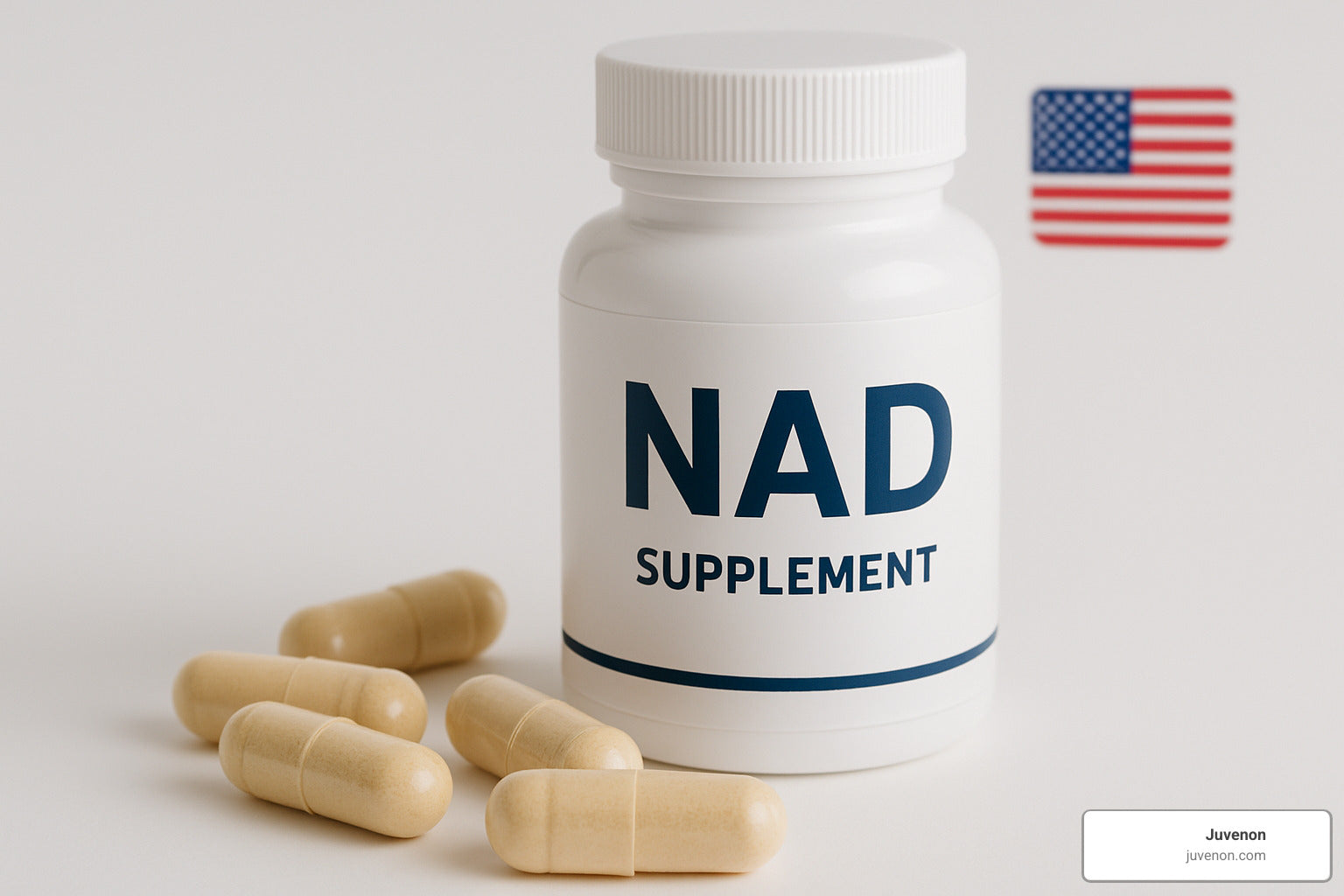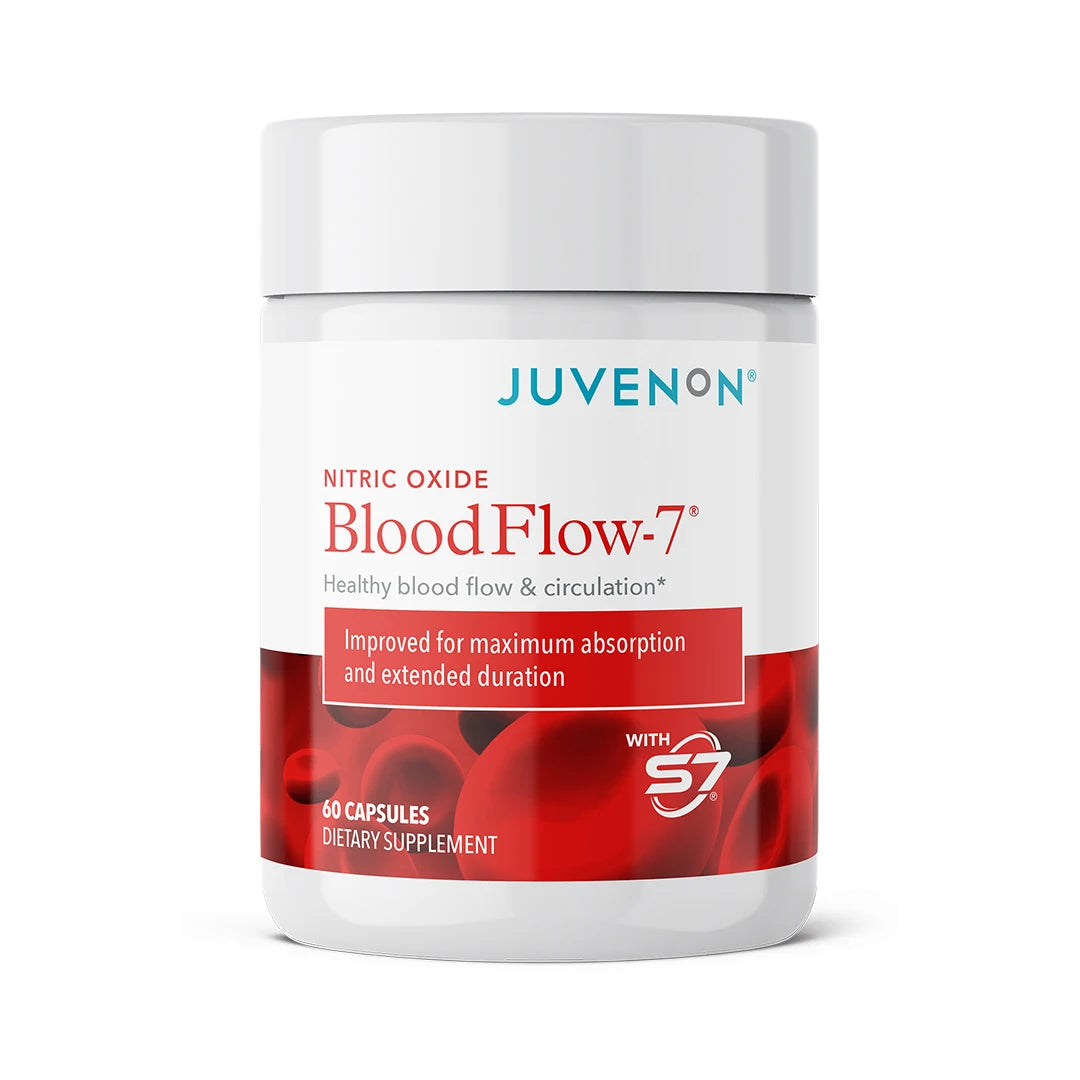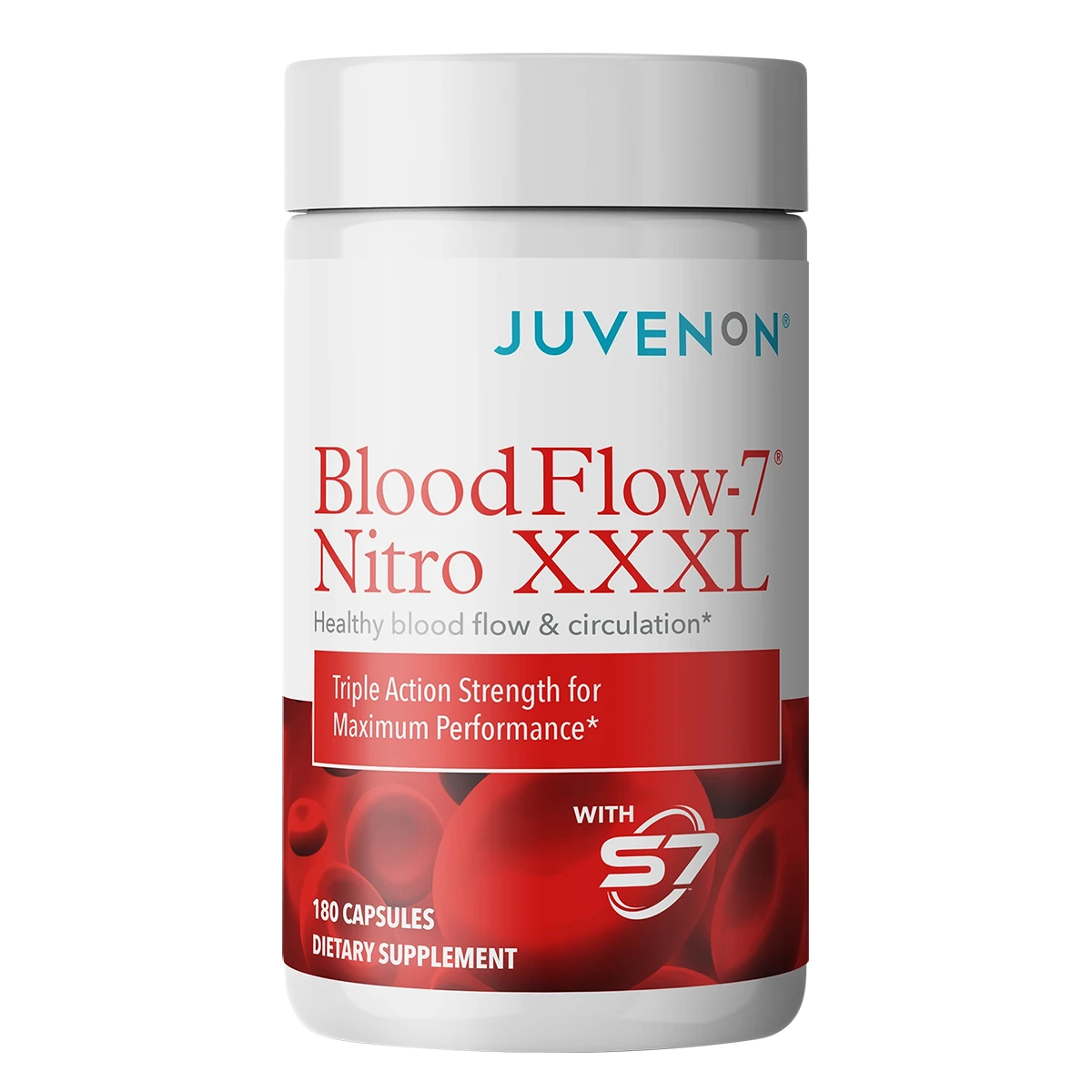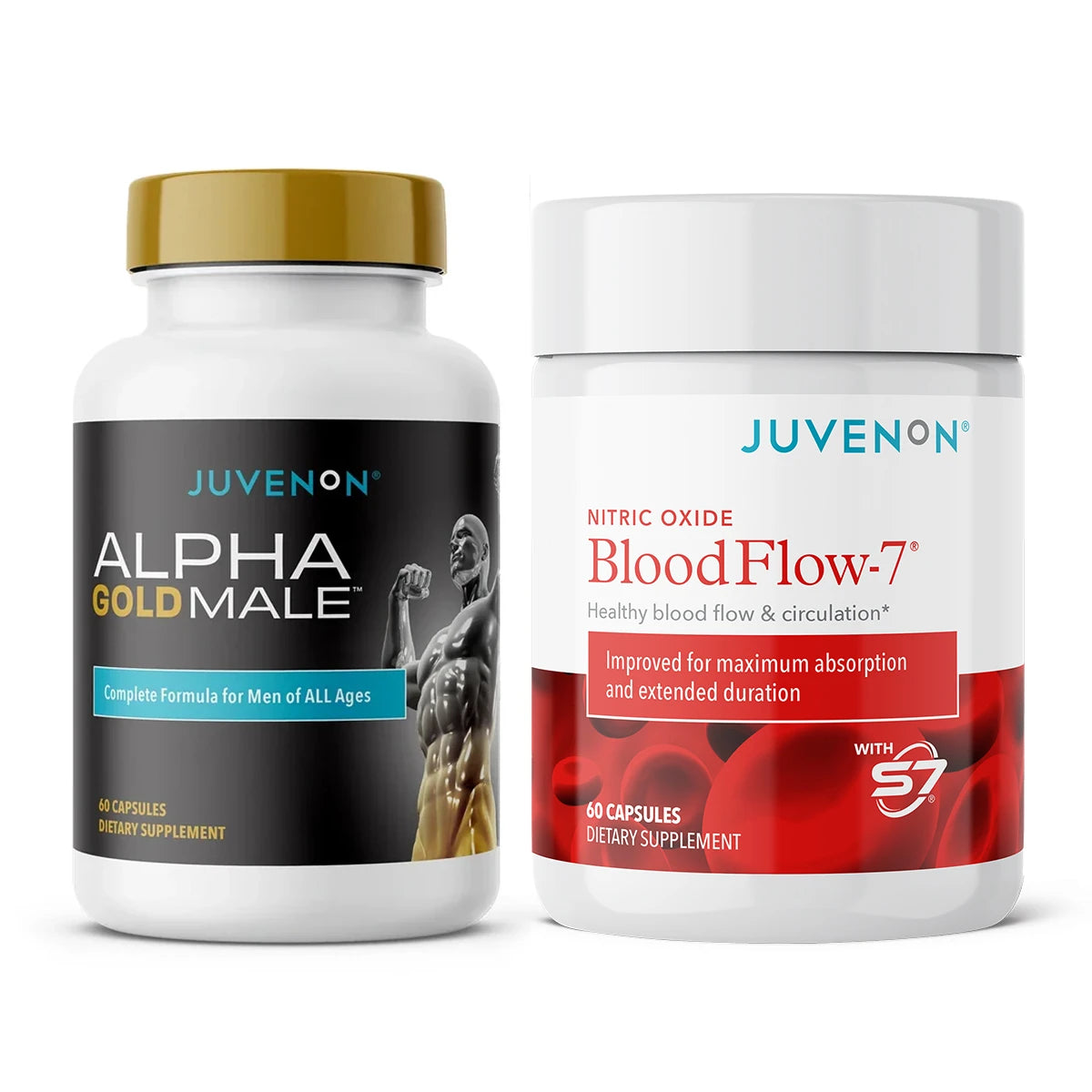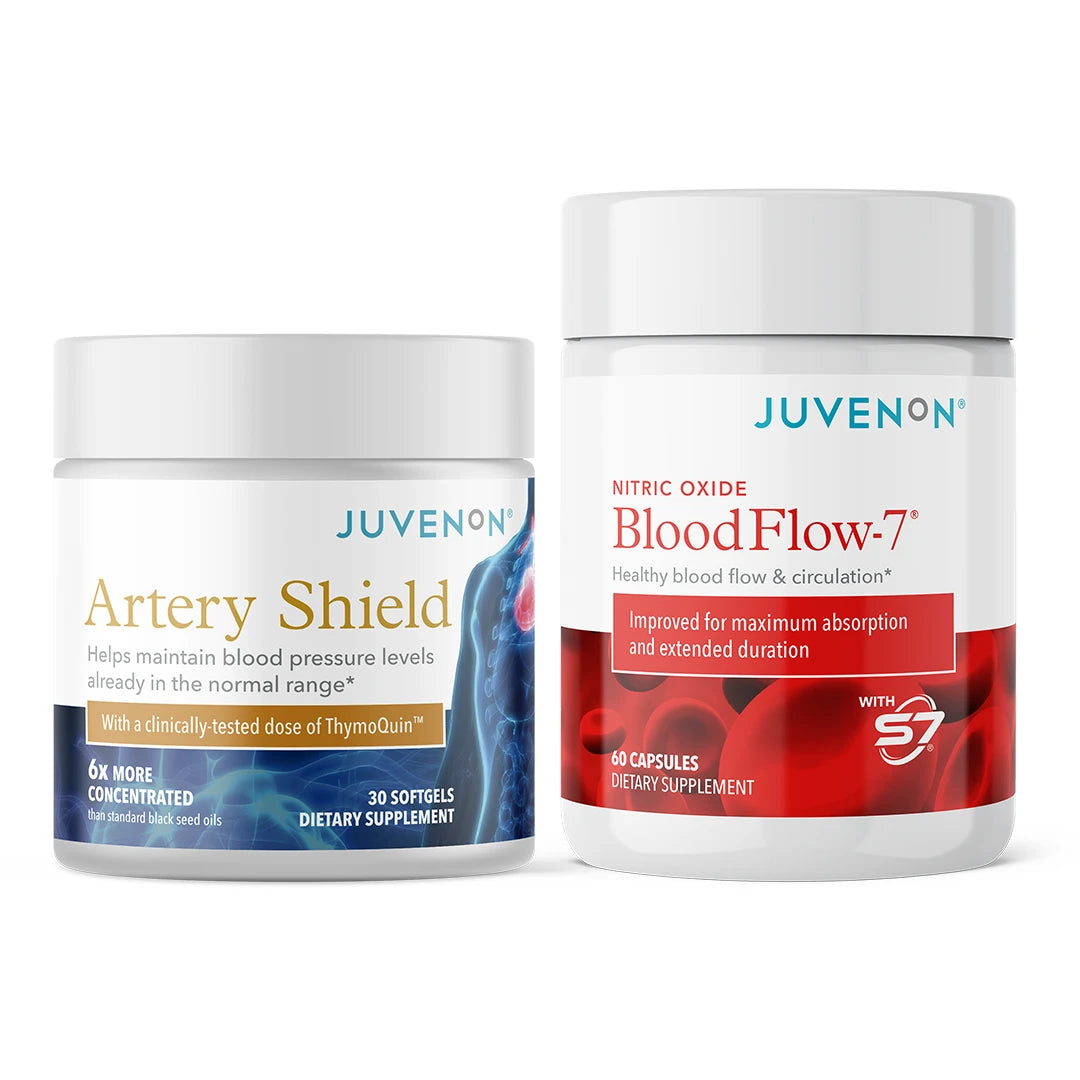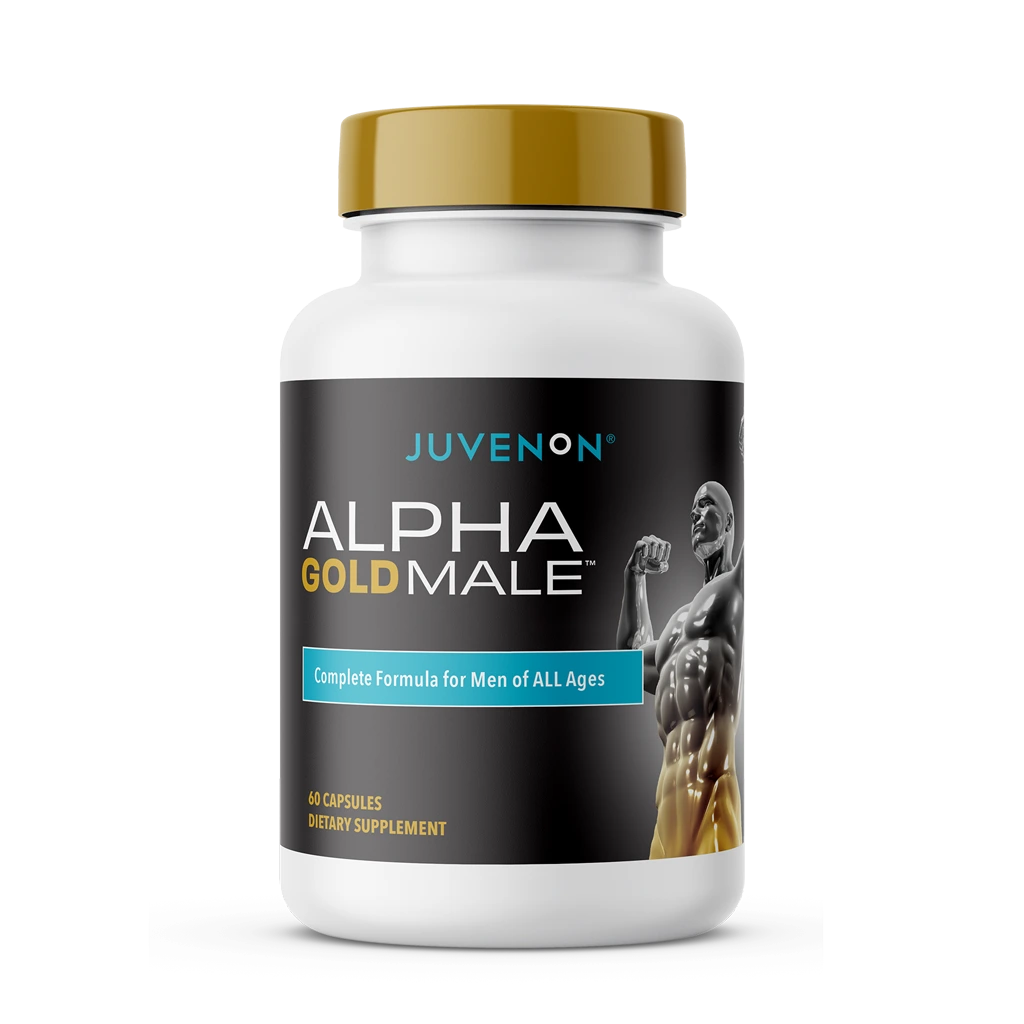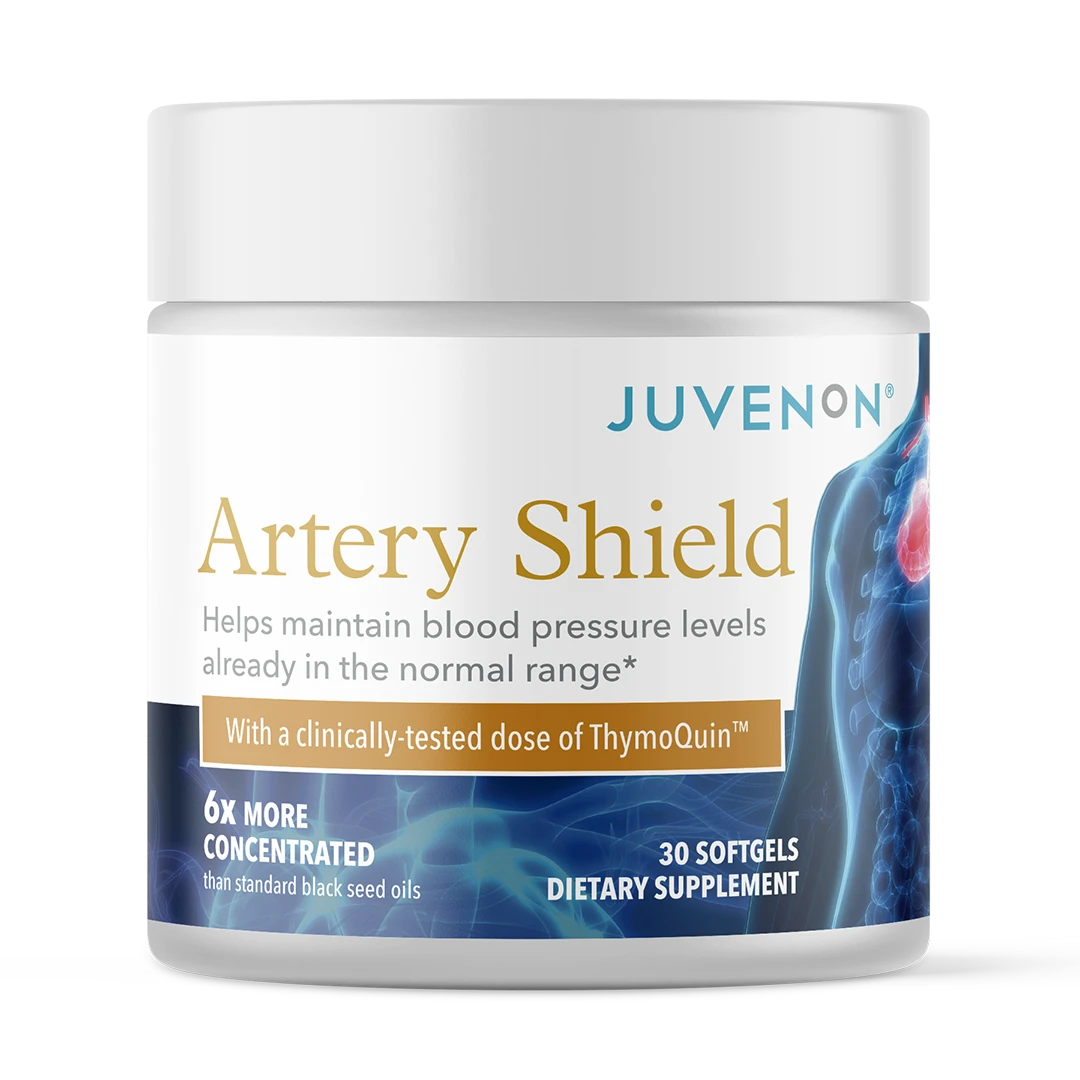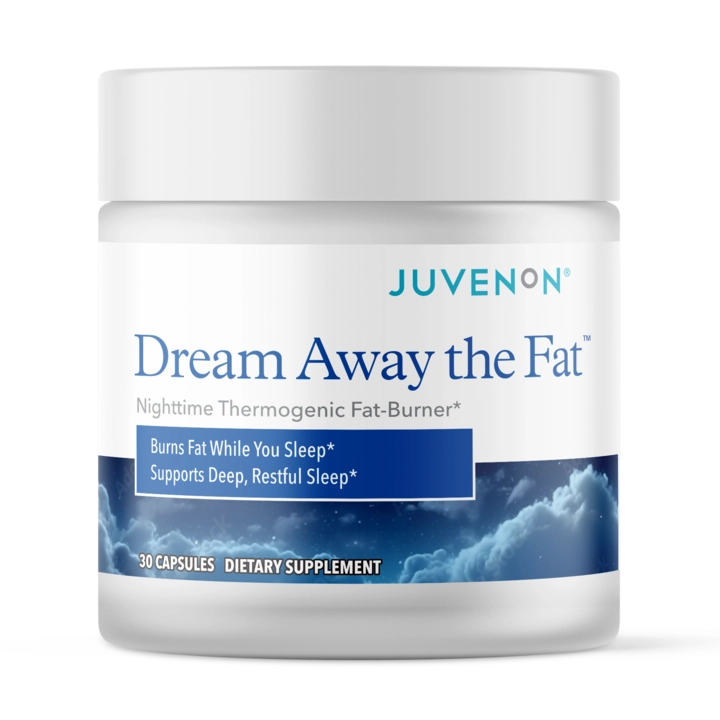Understanding the Difference: Free vs Total Testosterone
If you're researching free testosterone vs total testosterone, here's what you need to know:
| Type | Definition | Percentage | Significance |
|---|---|---|---|
| Total Testosterone | All testosterone in bloodstream (both free and protein-bound) | 100% | Initial screening test |
| Free Testosterone | Unbound testosterone that's biologically active | 2-3% | More accurate for symptoms assessment |
Free testosterone vs total testosterone is an important distinction that affects how we understand hormone health, especially as we age. While total testosterone measures all the hormone in your bloodstream, only a small fraction—the free testosterone—is actually available to interact with your cells and tissues.
Think of it like this: if total testosterone is your bank account balance, free testosterone is the cash in your wallet that you can actually spend right now.
Most testosterone (about 98%) is bound to proteins like sex hormone-binding globulin (SHBG) and albumin, making it temporarily unavailable for use by your body. Only the remaining 2-3% exists as free testosterone, which is the biologically active form that influences everything from muscle mass and bone density to energy levels and sexual function.
This distinction becomes crucial when addressing symptoms of low testosterone. Many people experience symptoms despite having "normal" total testosterone levels because their free testosterone is low. Understanding both measurements gives a more complete picture of your hormonal health.
I'm Michelle M. Henson, and as Head of Copywriting for a leading healthy aging supplement company, I've researched and written extensively about free testosterone vs total testosterone levels and their impact on wellness as we age. My background in health education has equipped me to translate complex hormonal concepts into practical information you can use.
Understanding Testosterone: The Vital Hormone
Let's talk about testosterone – that fascinating hormone that does so much more than most people realize.
While often dubbed the "male" hormone, testosterone is actually vital for both men and women. It's like that hardworking friend who quietly keeps things running behind the scenes of your body. As an androgen hormone, testosterone helps develop and maintain those characteristics we typically associate with masculinity, but its importance stretches far beyond that.
In men, most testosterone production happens in the Leydig cells of the testes. It's quite an impressive chain reaction – your brain's hypothalamus releases gonadotropin-releasing hormone, which signals your pituitary gland to produce luteinizing hormone. This hormone then travels through your bloodstream to the testes, triggering testosterone production. The adrenal glands chip in too, producing smaller amounts to supplement the main supply.
Women's bodies also need testosterone, though in much smaller quantities – about one-tenth of what men produce. For women, this vital hormone comes primarily from the ovaries and adrenal glands. Despite the lower levels, it's still incredibly important for women's overall health and wellbeing.
According to research published in the Journal of Clinical Endocrinology and Metabolism, "Free testosterone, which is unbound and active, is the factor that really helps us understand someone's hormone health." Source
This powerful hormone influences an impressive range of bodily functions. It helps build and maintain muscle mass, preserves bone density, and affects how your body distributes fat. Testosterone also boosts red blood cell production, improves sexual function and libido, and even plays roles in mood regulation and cognitive function. It influences hair growth patterns and contributes significantly to your energy levels and overall vitality.
Unfortunately, testosterone doesn't stay at peak levels forever. For men, levels typically begin declining around age 30, dropping by about 1-2% each year afterward. This gradual decrease contributes to many age-related changes we experience – from decreased muscle mass to those frustrating energy slumps in the afternoon.
When it comes to understanding the difference between free testosterone vs total testosterone, knowing how this hormone functions in your body becomes especially important. As we age, the balance between bound and unbound testosterone can shift, affecting how we feel and function on a daily basis. Getting a handle on these concepts is the first step toward addressing age-related hormonal changes effectively.
Total Testosterone Explained
When we talk about testosterone in your bloodstream, we're actually discussing two different forms—and understanding this distinction is key to managing your hormonal health.
Total testosterone is exactly what it sounds like: the complete amount of testosterone circulating in your body at any given time. It's like taking inventory of all the testosterone in your system, regardless of whether it's actively working or not.

Here's where things get interesting. Most of your testosterone doesn't travel alone through your bloodstream. Instead, it hitches a ride with proteins—kind of like taking public transportation instead of driving yourself.
Dr. Alvaro Ocampo explains it well: "The main difference between total testosterone and free testosterone is that total testosterone is the grand total of all the hormone available in the bloodstream. 98% of the testosterone the body produces is bound to either sex-hormone binding globulin (SHBG), or albumin, the 2% testosterone that's left is known as 'free testosterone.'"
Think of sex hormone-binding globulin (SHBG) as a very clingy companion. It grabs onto testosterone and holds tight, creating a bond that temporarily deactivates the hormone. About 60-70% of your total testosterone is locked up this way.
Albumin, another protein in your blood, is a more casual companion. It binds more loosely with testosterone, accounting for roughly 30% of your total testosterone. This testosterone can break free more easily when your body needs it.
When your doctor orders a total testosterone test, they're getting a big-picture view of your hormone production. These tests are popular because they're:
- Widely available at most labs
- Generally less expensive than specialized tests
- Good at identifying significantly high or low testosterone levels
But here's the catch—knowing your total testosterone is a bit like knowing how much money is in your bank account without knowing how much you can actually withdraw today. In certain situations, this distinction becomes crucial:
As we age, our SHBG levels often increase, potentially leaving less free testosterone available. If you have liver disease, your protein production might be affected, altering how much testosterone is bound or free. Even thyroid disorders can change your SHBG levels.
For women, who naturally produce much less testosterone than men, understanding the free portion becomes even more important for accurate diagnosis.
Total testosterone gives us valuable information about your body's overall hormone production capacity. But to truly understand how testosterone is affecting your daily energy, mood, muscle mass, and other functions, we need to look at how much of that testosterone is actually available for your body to use.
That's where free testosterone comes into the picture—which we'll explore next.
Free Testosterone Explained
When we talk about testosterone, it's the free version that's doing most of the heavy lifting in your body. Free testosterone is exactly what it sounds like – it's the portion of testosterone that roams freely in your bloodstream, unattached to any proteins.
Though it makes up a surprisingly small fraction of your total testosterone – just 2-3% – this unbound hormone is the real MVP of your hormonal health. It's like having a small amount of cash in your pocket rather than money locked away in a savings account; it's immediately available when you need it.
What makes free testosterone special is its ability to actually enter your cells and bind to androgen receptors. This is how testosterone works its magic throughout your body.
"Free testosterone is the concentration of testosterone in the blood that is not attached to proteins," explains one medical researcher. This unbound state gives it the freedom to travel where it's needed most – whether that's building muscle tissue, supporting brain function, or maintaining bone density.
Your body is incredibly efficient with this small but mighty portion of testosterone. Free testosterone actively works to:
- Stimulate muscle growth and maintenance (especially important as we age)
- Support healthy brain function and positive mood
- Regulate hair growth patterns (for better or worse!)
- Maintain strong, dense bones
- Boost energy by supporting red blood cell production
You might also hear about "bioavailable testosterone," which includes both free testosterone and the portion that's loosely bound to a protein called albumin. Since albumin holds testosterone in a relatively loose grip, this testosterone can break free when needed, making about 30-35% of your total testosterone potentially bioavailable to your tissues.
Medical research shows just how closely related these measurements are – the correlation coefficient between bioavailable and free testosterone (measured by the gold standard method of equilibrium dialysis) is an impressive 0.9606.
Measuring free testosterone vs total can be tricky business. Laboratories use several different methods:
Direct measurement through equilibrium dialysis is considered the gold standard, but it's less commonly available and more expensive. More often, your doctor might use calculated free testosterone (using mathematical formulas based on your total testosterone, SHBG, and albumin levels) or the Free Androgen Index (FAI), which is especially useful for women's hormone assessment.
For many people – especially those experiencing symptoms of low testosterone despite "normal" total testosterone readings – measuring free testosterone provides the missing piece of the puzzle. It reveals what's actually available for your body to use, not just what's present in your bloodstream.
Free Testosterone vs Total Testosterone: What's the Difference?
The fundamental difference between free testosterone vs total testosterone is like comparing cash in your wallet to your entire bank account. While total testosterone represents all the hormone circulating in your bloodstream, free testosterone is the portion that's actually available right now to do its job in your body.

Think of it this way: imagine your body's testosterone as a workforce. Total testosterone represents your entire team, but about 98% of these workers are currently tied up in meetings (bound to proteins). Free testosterone? That's the small team of workers (just 2-3%) who are available right now to complete important tasks throughout your body.
Here's how these two measurements stack up against each other:
| Characteristic | Total Testosterone | Free Testosterone |
|---|---|---|
| Definition | All testosterone in bloodstream | Unbound, biologically active testosterone |
| Percentage | 100% | 2-3% |
| Binding status | Includes bound and unbound | Unbound only |
| Biological activity | Mostly inactive (when bound) | Fully active |
| Primary test purpose | Overall production assessment | Functional assessment |
| When to test | Initial screening | When symptoms persist despite normal total T |
| Testing complexity | Standardized, widely available | More complex, less standardized |
| Diagnostic value in SHBG abnormalities | Limited | Superior |
| Cost | Generally lower | Generally higher |
According to research published in the World Journal of Men's Health, "Testosterone is one of the most important hormones in the human body." But not all testosterone is created equal when it comes to affecting your day-to-day health and wellness. Source
Free Testosterone vs Total: Understanding Bioavailability
When we talk about free testosterone vs total, we're really discussing which testosterone can actually get to work in your body. This concept is called bioavailability – essentially, how much of the hormone can actually reach its target and do something useful.
Free testosterone is like an independent contractor – it's ready to work immediately, with no strings attached. It can bind to receptors throughout your body and get to work right away. That's why, even though it makes up just 2-3% of your total testosterone, it has such a powerful impact.
The rest of your testosterone is temporarily "employed" elsewhere:
About 60-70% is tightly bound to a protein called sex hormone-binding globulin (SHBG). This testosterone is essentially locked away and unavailable for immediate use – like money in a long-term CD that you can't access without penalties.
Another 30% is loosely attached to a protein called albumin. This portion is like money in a savings account – not immediately available, but you could get to it if needed. Together with free testosterone, this albumin-bound portion makes up what doctors call "bioavailable testosterone."
A healthy person maintains a fairly consistent ratio of free to total testosterone. But here's where things get interesting: conditions that change your SHBG levels can dramatically alter how much free testosterone you have, even if your total testosterone stays the same. This explains why two people with identical total testosterone levels might feel completely different!
Free Testosterone vs Total: Impact on Health and Wellness
The distinction between free testosterone vs total testosterone isn't just academic – it can make a real difference in your quality of life and treatment options.
Imagine this common scenario: A 45-year-old man visits his doctor feeling exhausted, with no sex drive, losing muscle despite working out, and feeling down in the dumps. His doctor orders a total testosterone test, which comes back at 350 ng/dL – technically within the "normal" range of 300-800 ng/dL. Based on this alone, he might be told his symptoms aren't hormone-related.
But what if this same man has lifted SHBG levels due to aging, a liver condition, or certain medications? His free testosterone could be significantly below normal, explaining all his symptoms despite the "normal" total testosterone reading.
Research shows that relying only on total testosterone would miss about 26% of men who actually have low free testosterone. That's a lot of people potentially suffering without proper treatment!
The health impacts of this distinction touch virtually every aspect of your wellbeing:
Your physical performance depends heavily on free testosterone, which directly influences how your body builds muscle, generates strength, and recovers from exercise. Your sexual function – both desire and performance – correlates more strongly with free testosterone than total. Even your mental clarity, focus and mood are influenced by free testosterone crossing into your brain.
Free testosterone also plays crucial roles in your metabolic health by affecting insulin sensitivity and where your body stores fat. It helps maintain strong bones by supporting bone mineral density and preventing osteoporosis as you age.
For women, this distinction becomes even more critical. Since women naturally have much lower testosterone levels (about one-tenth of men's), that small free fraction is particularly significant. In conditions like polycystic ovary syndrome (PCOS), measuring free testosterone often provides more valuable information than total testosterone alone.
According to the Mayo Clinic: "In polycystic ovarian syndrome, insulin resistance is associated with low SHBG levels, making bioavailable or free testosterone more significantly lifted than total testosterone." Source
Understanding both measurements – and knowing when to look beyond just total testosterone – can be the difference between finding answers and continuing to struggle with unexplained symptoms as you age.
Why Both Free and Total Testosterone Levels Matter
When it comes to understanding your hormone health, looking at both free testosterone vs total testosterone gives you the most complete picture. It's a bit like checking both your bank balance and your available cash – each tells you something important about your financial health.
Total testosterone is a great starting point. It shows how much testosterone your body is producing overall and can quickly flag significant deficiencies or excesses. Medical guidelines generally recommend total testosterone as the first test when investigating potential hormone issues.
Research has established some helpful benchmarks for total testosterone:
- Below 150 ng/dL typically confirms hypogonadism (low testosterone)
- Above 350 ng/dL generally rules out hypogonadism
- Between these values, you'll need more testing for a clear answer
But relying on total testosterone alone can sometimes lead you astray. Think about it – if most of your testosterone is locked up and unavailable, knowing the total amount doesn't tell the whole story.
This becomes particularly important in several common situations. If you're carrying extra weight, have diabetes, thyroid issues, or are simply getting older, your SHBG levels (the proteins that bind testosterone) can change significantly. Your total testosterone might look normal while your free testosterone – the portion that actually affects how you feel – could be quite low.
As we age, this distinction becomes even more crucial. SHBG typically increases as we get older, which means less free testosterone is available even if total levels look okay. This helps explain why many older adults experience symptoms of low testosterone despite "normal" test results.
For women, the distinction is even more critical. Since women naturally have much lower testosterone levels overall, the small free portion provides especially valuable information, particularly for conditions like PCOS.
A study published in the Journal of Clinical Endocrinology and Metabolism found that free testosterone measurements give better insight into mild testosterone deficiency than total testosterone alone. This research highlights why looking beyond basic tests matters when symptoms suggest a hormone imbalance.
At Juvenon, we understand that hormonal health is nuanced and multifaceted. Supporting healthy aging means appreciating these subtle but important distinctions in hormone measurements.
Free Testosterone vs Total: Which Measurement Is More Important?
Is free testosterone vs total testosterone more important? That's a bit like asking whether knowing your credit score or your bank balance matters more – it depends entirely on what you're trying to figure out.
Total testosterone works well as a starting point because it's widely available, standardized across labs, generally less expensive, and quickly identifies severe deficiencies or excesses. When values are extremely low (below 150 ng/dL) or clearly normal (above 350 ng/dL), total testosterone alone can often provide a reliable diagnosis.
But free testosterone becomes the star of the show in several important scenarios:
When your SHBG levels might be abnormal due to obesity, aging, liver disease, or thyroid issues, free testosterone gives you the real story about your hormone activity. Your total levels might look fine while your free testosterone is actually quite low.
For borderline cases where your total testosterone falls in that gray zone (typically between 200-350 ng/dL) and you're experiencing symptoms, free testosterone provides crucial additional information that could explain how you're feeling.
Women benefit particularly from free testosterone testing. Because women naturally have much lower overall testosterone levels, the free fraction often provides more clinically relevant information, especially for conditions like PCOS.
When monitoring certain treatments, including testosterone replacement therapy or medications that affect SHBG, free testosterone may better reflect how well the treatment is working.
As Dr. Joshua Smith explains: "Free testosterone is the concentration of testosterone in the blood that is not attached to proteins." This unbound portion is what actually interacts with your tissues and drives testosterone's effects throughout your body.
The ideal approach isn't choosing one over the other, but rather using them together strategically. Starting with total testosterone makes sense for initial screening, then adding free testosterone when needed gives you the complete picture without unnecessary testing.
This comprehensive approach ensures you won't miss important hormonal imbalances while still being practical and cost-effective – exactly the kind of balanced, evidence-based perspective we value at Juvenon.
Factors Affecting Testosterone Levels
Have you ever wondered why your testosterone levels might be different from someone else's—or why they change throughout your life? The truth is, numerous factors influence both your free testosterone vs total testosterone levels, often in ways that are interconnected and complex.
Age is perhaps the most significant factor affecting your testosterone. For men, levels typically peak during early adulthood, creating a foundation of energy, muscle strength, and vitality. After age 30, however, nature begins a gradual decline, with testosterone decreasing by about 1-2% each year. By the time you reach 70, your testosterone levels might be 30-50% lower than they were at their peak.
What's particularly interesting is how this decline affects your daily hormone rhythm. When you're young, your testosterone levels follow a predictable pattern—highest in the early morning (about 50% higher than evening levels). As you age, this daily fluctuation becomes less pronounced, which is why many men notice changes in morning energy and other testosterone-related functions.
Research has uncovered a concerning trend beyond natural aging: "There is a documented 1% annual decline in testosterone levels for men since 1950." This suggests that modern lifestyle and environmental factors may be accelerating testosterone decline beyond what we'd expect from aging alone.
Your body's level of sex hormone-binding globulin (SHBG) dramatically impacts how much free testosterone vs total testosterone is available for your body to use. As you age, SHBG typically increases, which further reduces your free testosterone—even if your total testosterone hasn't dropped as significantly. This explains why many older adults experience low testosterone symptoms despite having "acceptable" total testosterone levels.
Several health conditions can alter your SHBG production. Liver disease changes how much SHBG your body makes. Thyroid disorders swing SHBG in opposite directions—hypothyroidism decreases it while hyperthyroidism increases it. If you're carrying extra weight, especially around your midsection, your SHBG levels typically decrease due to the relationship between body fat, insulin resistance, and hormone regulation.
Your daily lifestyle choices substantially influence your testosterone levels too. Your body composition matters—higher body fat percentage, especially that stubborn visceral fat around your organs, is associated with lower testosterone. Physical activity plays a crucial role as well. Regular resistance training can boost your testosterone, while extreme endurance exercise may temporarily lower it (though this effect is usually short-lived).
Sleep quality might be one of the most underappreciated factors affecting your hormone health. Poor sleep or chronic sleep deprivation reduces testosterone production, which is why addressing sleep issues can sometimes help resolve hormone-related symptoms. Similarly, chronic stress increases cortisol, which can suppress testosterone production—creating a physiological explanation for why ongoing stress might affect everything from your energy to your libido.
Your dietary choices matter too. Excessive alcohol consumption can reduce testosterone production, while nutritional deficiencies—particularly zinc, vitamin D, and magnesium—can impair testosterone synthesis. This is why a balanced diet rich in whole foods supports not just overall health but hormone balance specifically.
Various medical conditions significantly impact testosterone levels. If you have diabetes or metabolic syndrome, you're more likely to experience lower testosterone. Chronic inflammatory conditions can suppress the entire hormonal axis that controls testosterone production. Direct injuries or infections affecting the testicles can reduce production capacity, while disorders affecting your pituitary or hypothalamus disrupt the signaling that stimulates testosterone production in the first place.
Medications and environmental factors introduce another layer of complexity. Certain medications—including opioids, glucocorticoids, and some antidepressants—can lower testosterone. If you've used anabolic steroids, they suppress your natural production (sometimes permanently). Environmental endocrine disruptors found in some plastics, pesticides, and personal care products may also affect your hormone balance, though research in this area continues to evolve.
Understanding these factors helps explain the wide variation in testosterone levels between individuals and why your own levels might change over time. It also highlights why looking at just one testosterone number—without considering the whole picture of your health and lifestyle—rarely tells the complete story of your hormonal health.
How to Test for Free and Total Testosterone
If you're concerned about your testosterone levels, getting the right test is crucial for an accurate picture of your hormonal health. Testing methods for free testosterone vs total testosterone differ in complexity, availability, and accuracy.
When it comes to measuring total testosterone, blood tests are the standard approach. Your doctor will typically use one of two methods:
Immunoassays are widely available at most labs and provide quick results, but they're less precise when measuring lower testosterone concentrations (which is particularly important for women and older men). On the other hand, liquid chromatography-tandem mass spectrometry (LC-MS/MS) offers superior accuracy and is considered the gold standard, though it's not as widely available and may cost more.
"The timing of your test matters more than many people realize," explains Dr. Marcus Chen, an endocrinologist specializing in hormone health. "Testosterone levels follow a daily rhythm, peaking in the morning and declining throughout the day."
For the most accurate results when testing total testosterone:
Get tested in the early morning, ideally between 7-10 AM when your levels are naturally highest. This is especially important for men under 60, as the daily testosterone rhythm becomes less pronounced with age. Fasting for several hours before your test may also be recommended, so check with your healthcare provider about specific instructions.
Measuring free testosterone vs total testosterone is a bit more complex. While total testosterone testing is straightforward, free testosterone can be assessed through several different approaches:
Direct measurement through equilibrium dialysis is considered the most accurate method for measuring free testosterone. This laboratory technique physically separates the unbound testosterone from protein-bound testosterone, providing a true measurement rather than an estimate. However, this gold-standard method isn't widely available and tends to be more expensive.
Many labs instead use calculated free testosterone, which estimates your free testosterone levels using mathematical formulas based on your total testosterone, SHBG, and albumin measurements. While not as precise as direct measurement, research shows these calculations correlate well with direct methods. In fact, studies indicate the correlation coefficient between calculated bioavailable testosterone and directly measured free testosterone is an impressive 0.9606.
For women specifically, the Free Androgen Index (FAI) is often used. This calculation divides total testosterone by SHBG and multiplies by 100, providing a useful assessment of free testosterone status in women with suspected testosterone imbalances.
Some labs also offer analog-based immunoassays that attempt to directly measure free testosterone, but these methods have faced criticism for their accuracy compared to equilibrium dialysis.
"Many patients ask me whether they should just test total testosterone or if they need free testosterone measured too," says Dr. Chen. "I explain that it depends on their specific situation. If they have conditions that might affect their binding proteins, like thyroid disorders or liver disease, measuring both gives us a more complete picture."
For a truly comprehensive hormone assessment, especially if you're experiencing symptoms of testosterone deficiency, your doctor may recommend additional tests beyond just free testosterone vs total testosterone:
SHBG and albumin measurements help determine how much testosterone is bound versus free. Luteinizing hormone (LH) and follicle-stimulating hormone (FSH) tests can distinguish between primary testosterone deficiency (originating in the testes or ovaries) and secondary deficiency (originating in the brain's signaling system). Estradiol testing assesses potential estrogen imbalances, while prolactin and thyroid function tests can identify other hormonal factors that might be affecting your testosterone levels.
Home testing options have become increasingly popular for those seeking convenience or privacy. These typically involve collecting a blood sample via finger prick or providing a saliva sample, which you then mail to a laboratory. Results are usually available within a week.
While home testing offers convenience, it's worth noting their limitations. The accuracy may not match laboratory standards, particularly for free testosterone. Most home kits focus on total testosterone, and interpreting results without medical guidance can lead to confusion or unnecessary worry.
For the most reliable assessment of your testosterone status, work with a healthcare provider who understands the nuances between free testosterone vs total testosterone and can recommend the appropriate tests based on your specific symptoms, age, and health history.
Interpreting Your Testosterone Test Results
Those little numbers on your lab report can feel like a foreign language if you don't know what they mean. Let's decode your testosterone test results together, with some context that actually makes sense for your life and health journey.
What's "Normal" Anyway?
Reference ranges vary slightly between labs, but here's what's generally considered normal:
For Men:
- Total Testosterone typically ranges from 300-950 ng/dL for younger men (20s), gradually decreasing to 300-750 ng/dL for men over 50.
- Free Testosterone shows a more noticeable age-related decline, from about 5-20 ng/dL in your 20s to 3-12 ng/dL in your 70s and beyond.
For Women:
- Total Testosterone is much lower, typically between 8-60 ng/dL during reproductive years and 8-40 ng/dL after menopause.
- Free Testosterone in women is typically just a fraction of men's levels, generally below 1.08 pg/mL.
These numbers aren't the whole story. They're just part of a bigger conversation about your health.
When Numbers Are Low: What It Means
Your test results tell different stories depending on the pattern they show:
If your total testosterone is low but free testosterone is normal, you might have decreased SHBG levels. This is common if you're carrying extra weight, have insulin resistance, or thyroid issues. The good news? You might not need treatment if you're feeling fine.
When your total testosterone looks normal but free testosterone is low, your SHBG levels might be liftd. This happens with aging, liver disease, hyperthyroidism, or when estrogen is high. Even though your total T looks "normal," you might benefit from treatment if you're experiencing symptoms.
Finding both total and free testosterone low usually indicates a significant deficiency that typically lines up with noticeable symptoms.
It's worth noting that research shows using only total testosterone (with a cutoff of 280 ng/dL) would miss about 26% of men who actually have low free testosterone. That's why looking at both measurements matters.
Connecting Numbers to How You Feel
Low testosterone doesn't just exist on paper—it shows up in your daily life. You might notice:
Your sex drive has taken a vacation. Energy levels? What energy? Your muscles seem to be shrinking while your waistline expands. Maybe you're feeling irritable, foggy-headed, or just "off." Sleep might be disrupted, and over time, even your bone density could decrease.
These symptoms matter just as much as—if not more than—the numbers on your lab report. Free testosterone vs total measurements both give valuable insights, but how you feel in your body provides essential context.
When Numbers Are High
Liftd testosterone isn't always better. In men, unusually high levels might signal testicular or adrenal tumors, anabolic steroid use, or certain genetic conditions.
For women, high testosterone (especially above 200 ng/dL) often indicates conditions like PCOS, adrenal disorders, or possibly testosterone-producing tumors.
The Bigger Picture
A single testosterone measurement is just a snapshot—hormone levels naturally fluctuate throughout the day and from day to day. That's why most doctors recommend:
Testing in the morning (7-10 AM) when levels are naturally highest Repeating borderline tests before making treatment decisions Considering other hormones that interact with testosterone Acknowledging that some decline with age is perfectly normal
As one researcher wisely noted: "Assessment of androgen status should be based on more than a single measurement due to testosterone fluctuations."
For a truly comprehensive evaluation, work with a healthcare provider who understands hormone health. They can help interpret your results within the context of your overall health, symptoms, and goals—not just numbers on a page.
At Juvenon, we believe in looking at the whole picture of health, not just isolated measurements. Understanding both free testosterone vs total testosterone helps create a more complete view of your hormonal health as you age.
How to Increase Free Testosterone Levels Naturally
Looking to boost your testosterone naturally? You're not alone. While these strategies won't replace medical treatment for significant deficiencies, they can absolutely support healthy testosterone production and help optimize your free testosterone vs total testosterone balance.

Your body is designed to produce testosterone naturally, but modern lifestyles often work against this process. The good news? Simple lifestyle changes can make a remarkable difference.
Regular physical activity stands out as perhaps the most powerful natural testosterone booster. Resistance training 2-3 times weekly directly stimulates testosterone production. Those heavy compound movements like squats and deadlifts? They're testosterone gold mines. High-intensity interval training (HIIT) also delivers impressive hormonal benefits without requiring hours in the gym. Even moderate activity like a brisk daily walk helps maintain healthy levels. Just be careful not to overtrain—excessive endurance exercise can temporarily lower testosterone levels.
What you eat matters tremendously for hormone production. Severe calorie restriction might help you drop pounds quickly, but it can tank your testosterone levels. Instead, focus on consuming adequate protein (about 0.8-1g per pound of lean body mass) and including healthy fats in your diet. Both monounsaturated and saturated fats support testosterone production—yes, that means eggs and olive oil are your hormonal friends! Meanwhile, processed foods and added sugars contribute to inflammation and insulin resistance, both testosterone killers.
Don't overlook specific nutrients that act as building blocks for testosterone. Zinc-rich foods like oysters, beef, pumpkin seeds, and crab contain a mineral essential for testosterone production. Vitamin D, often called the "sunshine hormone," plays a crucial role too—either through sun exposure or supplementation if your levels are low.
Your body composition dramatically impacts your hormone levels. Excess body fat, especially around the abdomen, contains an enzyme called aromatase that converts testosterone to estrogen—not what we're aiming for! Building muscle mass naturally supports higher testosterone levels. The key is gradual, sustainable weight management rather than crash dieting, which can temporarily crater your hormone levels.
Sleep might be the most underrated testosterone booster available. Your body produces most of its testosterone during deep, restorative sleep. Aim for 7-9 quality hours nightly, maintain consistent sleep schedules, and create a sleep-friendly environment (dark, cool, and quiet). Those late-night screen sessions? The blue light disrupts melatonin production and sleep quality, ultimately affecting your testosterone production.
Chronic stress is a testosterone vampire. When stress hormones like cortisol stay lifted, they directly suppress testosterone production. Taking time for mindfulness or meditation, even just 10-15 minutes daily, can significantly reduce stress. Regular relaxation activities like deep breathing, yoga, or simply engaging in hobbies you enjoy can work wonders for your hormonal balance. Don't underestimate the power of positive social connections either—they naturally reduce stress hormones.
The substances you put in your body matter too. Excessive alcohol impairs testosterone production, so moderation is key. Also worth considering is your exposure to endocrine-disrupting chemicals found in some plastics, pesticides, and personal care products. Simple swaps like storing food in glass rather than plastic containers and choosing natural cleaning products can reduce your exposure to these testosterone-disrupting compounds.
Some supplements show promise for supporting healthy testosterone levels. Vitamin D supplementation may help if your levels are low. Zinc supplements benefit those who are deficient, while magnesium supports numerous hormonal processes and is often lacking in modern diets. Ashwagandha, an adaptogenic herb, has shown potential for supporting testosterone levels while reducing stress.
At Juvenon, we understand the importance of supporting natural hormone balance as part of healthy aging. Our scientifically formulated supplements are designed to support cellular health and optimal function, which can contribute to overall hormonal balance.
These natural approaches work best as part of a comprehensive lifestyle strategy. If you're experiencing significant symptoms of low testosterone, consult with a healthcare provider who can help determine whether your free testosterone vs total testosterone balance needs medical attention.
Frequently Asked Questions about Free Testosterone vs Total Testosterone
Can you have normal total testosterone but low free testosterone?
Yes, this happens more often than you might think, and it can be a real source of confusion for both patients and doctors. Imagine your body as a transportation system. Total testosterone represents all the vehicles on the road, while free testosterone vs total includes those vehicles actually delivering packages (free) versus those parked in garages or stuck in traffic (bound).
You can absolutely have plenty of vehicles (normal total testosterone) but not enough making deliveries (low free testosterone). This typically happens when you have higher levels of sex hormone-binding globulin (SHBG), which acts like a parking garage that's holding too many testosterone molecules, preventing them from circulating freely.
This mismatch between total and free levels tends to show up in several groups of people. Older men often experience this as SHBG naturally increases with age. People with liver disease might see this pattern since the liver produces SHBG. Those with an overactive thyroid (hyperthyroidism) typically produce more SHBG. Certain medications, especially estrogens and some anticonvulsants, can also park more testosterone in the "garage."
This explains why some people feel all the symptoms of low testosterone—fatigue, low libido, muscle loss—despite blood tests showing "normal" total testosterone. As one researcher put it, "Free testosterone is a better indicator of mild hypogonadism than total testosterone in pubertal boys and adult men." This is why measuring both forms gives you a much clearer picture of what's actually happening in your body.
How is free testosterone calculated?
Measuring free testosterone is a bit like trying to count only the red cars on a busy highway—it's technically possible but challenging to do directly. Scientists have developed several approaches to this problem.
The gold standard method is called equilibrium dialysis, which physically separates unbound testosterone from the protein-bound form. Think of it as actually counting those delivery vehicles on the road. While extremely accurate, this method is expensive and not widely available for routine testing—kind of like having a helicopter to count those red cars.
More commonly, doctors calculate free testosterone using mathematical formulas that consider three key measurements: your total testosterone level, SHBG concentration, and sometimes albumin concentration (another protein that binds testosterone, but less tightly than SHBG). These calculations are like using traffic patterns and vehicle registration data to estimate how many cars are actually moving at any given time.
The most widely used calculation is the Vermeulen Equation, which accounts for how testosterone binds to both SHBG and albumin. For women, doctors sometimes use a simpler calculation called the Free Androgen Index (FAI), calculated as (Total Testosterone ÷ SHBG) × 100, though it's less accurate than the Vermeulen equation.
Research shows these calculated values correlate well with direct measurements: "Calculated free testosterone using standardized algorithms generally corresponds well with the gold standard equilibrium dialysis method, despite being less direct."
Some labs offer "direct" free testosterone tests using analog methods, but ironically, these are often less accurate than the calculated values based on good measurements of total testosterone and SHBG. It's a bit like using an automated counter that sometimes mistakes blue cars for red ones.
Should I test free testosterone or total testosterone?
This question reminds me of asking whether you should check your bank account balance or your wallet—ideally, you'd look at both for the complete financial picture. But if you had to choose, which should you prioritize?
For most people starting their hormone health journey, total testosterone makes sense as the first test. It's widely available, standardized across labs, and generally less expensive. Medical guidelines support this approach: "Total T should be the first test ordered in the workup for hypogonadism."
Total testosterone gives you that big-picture view, like your overall bank balance. If it's very low (under 200 ng/dL) or comfortably normal (over 350 ng/dL), that often tells you enough to proceed with or without treatment.
However, free testosterone vs total becomes particularly important in several situations. If your total testosterone falls in that gray zone (typically between 200-350 ng/dL), checking your free testosterone can clarify whether you truly have a deficiency. If you're experiencing symptoms of low testosterone despite normal total levels, free testosterone might reveal the hidden problem.
Free testosterone testing becomes even more valuable if you:
- Are over 50 (when SHBG naturally increases)
- Carry excess body fat (which affects hormone binding)
- Have liver or thyroid conditions (which impact SHBG production)
- Take medications that might affect hormone binding
- Are monitoring how well testosterone replacement therapy is working
For women, especially those with suspected PCOS or other androgen-related conditions, measuring both total testosterone and SHBG (to calculate the free androgen index) often provides the most useful information.
Testosterone levels naturally fluctuate throughout the day, typically peaking in the morning. For the most accurate results, get tested in the morning (between 7-10 AM), and if results seem borderline, consider repeat testing before making major treatment decisions.
At Juvenon, we understand that hormone health is a key component of healthy aging. While our supplements aren't hormone replacements, supporting overall cellular health can help create an environment where your body maintains more balanced hormone levels naturally.
Conclusion
Understanding the distinction between free testosterone vs total testosterone is crucial for accurately assessing hormonal health and addressing age-related changes. While total testosterone gives us the big picture of overall hormone production, free testosterone tells us how much of that hormone is actually available to perform its vital functions in the body.

I've spent years researching hormone health, and if there's one thing I've learned, it's that the body's hormonal systems are beautifully complex. The relationship between free testosterone vs total testosterone is a perfect example of this complexity. It's not enough to know how much testosterone your body produces—you need to know how much of it your body can actually use.
Think about it like having money in your bank account versus cash in your wallet. The total amount matters, but what you can spend right now makes all the difference in your day-to-day life.
Throughout this guide, we've explored several key insights that I believe everyone should understand about their testosterone health:
First, both measurements truly matter. Total testosterone works wonderfully as a screening tool to get that initial picture, while free testosterone provides that critical information about what's actually available to your cells, especially when your results fall in those tricky borderline ranges or when your SHBG levels might be abnormal.
Context is everything when it comes to hormone testing. Your testosterone levels should always be interpreted alongside your symptoms, age, overall health picture, and other hormone levels. A number on a lab report only tells part of the story—how you feel matters tremendously.
When you do get tested, timing matters. Morning testing captures those peak levels, and if your results seem borderline, don't hesitate to request repeat testing. Our hormones naturally fluctuate, and a single snapshot might not tell the whole story.
I'm particularly passionate about the natural optimization strategies we've discussed. Your lifestyle choices—from how you exercise and what you eat to how well you sleep and manage stress—have profound effects on your testosterone levels. These factors give you real power to support your hormonal health naturally.
As we age, understanding the free testosterone vs total testosterone distinction becomes increasingly important. Those age-related changes are natural, but knowing that your SHBG levels typically rise with age helps explain why some men with "normal" total testosterone still experience symptoms of low testosterone.
At Juvenon, we believe in supporting healthy aging through science-backed approaches. While our supplements aren't hormone replacements, they're carefully designed to support your body's natural processes and optimize cellular function—the foundation upon which hormonal health is built.
Whether you're currently dealing with symptoms or simply taking proactive steps to maintain your vitality as you age, understanding these hormone testing nuances empowers you to make truly informed decisions about your health.
I always remind people that significant hormone imbalances deserve professional attention. The strategies we've discussed work best as part of an integrated approach that includes regular medical care with qualified healthcare providers who can develop personalized treatment plans.
By appreciating the crucial difference between free testosterone vs total testosterone, you're better equipped to advocate for appropriate testing, interpret your results accurately, and take effective steps toward optimizing your hormonal health for years to come. And that's what healthy aging is all about—staying informed, being proactive, and supporting your body's natural wisdom.
For more information about understanding testosterone and optimizing performance, check out our ultimate guide to understanding total and free testosterone for performance.

